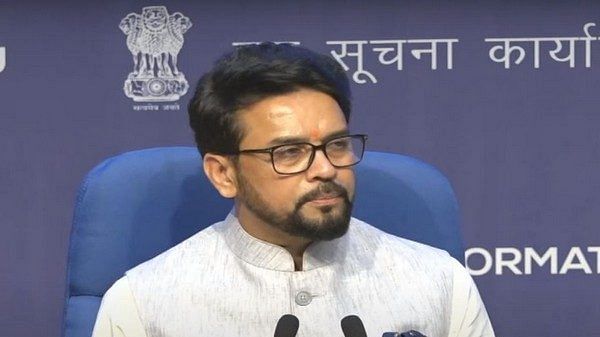The Ministry of Information and Broadcasting published a draft Broadcasting Services (Regulation) Bill on 10 November for public consultation. The Bill seeks to replace the Cable Television Networks (Regulation) Act, 1995 and consolidate broadcasting regulation under one statute. Notably, for the first time, it includes OTT services in broadcasting legislation. While the ministry claims to enhance the broadcasting business environment, this Bill risks stifling the growing digital economy.
The proposed legislation threatens to apply outdated TV regulations on the digital realm. For instance, it grants the information and broadcasting ministry authority to prescribe a ‘Programme Code’ for OTT services, similar to television. The issue here is the Code’s excessive breadth. For instance, TV content that is not “decent” or in “good taste” is prohibited. This vague standard goes much beyond permissible restrictions on free expression under Article 19(2) of the Indian Constitution. Much of Indian television’s general entertainment, often formulaic and predictable, may result from adhering to this Programme Code. Applying such a code to OTT services risks inducing a similar homogenisation. Under a TV-style Programme Code, the creative sector might be cornered into adopting the formulaic storylines common in soap operas and reality shows.
Furthermore, the Bill mandates OTT services to form a ‘Content Evaluation Committee’ (CEC), which will pre-certify content before it can be released. In other words, it wants streaming companies to censor their content. Such a body should consist of members who represent “women, child welfare advocates, Scheduled Castes, Scheduled Tribes, and minorities”. Not only is such a requirement unnecessary, it is also exceptional. No other country in the world has such obligations. Moreover, OTT services stream diverse and niche content. Given the diversity and specialisation of OTT content, the proposed composition of the CEC might lead to expertise mismatch in content evaluation. Imagine a child welfare expert on the CEC assessing astronomy content—such scenarios highlight the absurdity of the state’s involvement in every company’s content certification process. Many large companies already have comprehensive review systems to ensure content appropriateness.
Also read: TRAI’s OTT regulation agenda is confusing. It forgets consumers, serves telco interests
TRAI doesn’t inspire confidence
The Bill also paves the way for the Telecom Regulatory Authority of India (TRAI) to govern how OTT services interconnect with telecom and internet networks, similar to its role with TV. TRAI has sought such authority since 2015, likely to broaden its jurisdiction. In its consultation paper on “Regulatory Framework for OTT Consultation Services”, TRAI enquired about the need to license OTT communication services, like WhatsApp and Zoom. Industry and civil society organisations pushed back against this proposal at that stage, particularly since this is a slippery slope to regulation of all types of OTT services. TRAI repeated the exercise and floated a consultation paper on the same topic in 2018, which led to a similar outcome. Not one to back off, TRAI once again solicited public opinion on whether telecom, TV, and digital should be regulated by one regulator and a common framework, in its consultation paper on ‘Regulating Converged Digital Technologies and Services’ earlier this year.
TRAI’s inconsistent track record in TV regulation undermines confidence in its capability to regulate another content medium. India’s broadcasting rules are some of the most intricate and restrictive globally, with TRAI tightly controlling elements like channel pricing and business-to-business dealings. As a result, a broadcaster investing Rs 50 crore in a high-quality series is forced to price its content similarly to another that invests Rs 5 crore. This raises the question: why would TV channels invest more in content if it doesn’t yield higher returns?
Consider the implications if TRAI extends its overbearing approach to OTT services. A global OTT provider might be subject to the same price caps as TV channels, as they are viewed by the regulator as essentially offering similar services like movies and TV series. This over-regulation is evident in the fact that, between 2004 and 2020, TRAI revised broadcasting regulations over 75 times. Over 70 per cent of these regulations have been contested by industry stakeholders in tribunals and courts, leading to the Telecom Disputes and Settlement Appellate Tribunal (TDSAT) dedicating most of its time to resolving broadcasting disputes.
MeitY introduced the IT Rules and Digital Media Ethics Code, transferring its administration to the information and broadcasting ministry merely two years ago. The rationale behind the ministry’s desire to overhaul this emerging framework, just as stakeholders are getting accustomed to it, remains unclear. There’s no substantial evidence of market failure or consumer dissatisfaction, except for public interest litigations that aim to limit creative freedom and impose new speech restrictions. With close to 60 diverse OTT services in India offering regional and global content, the OTT market is functioning well. This raises a critical question: what problem is the Bill actually addressing by bringing OTT within its scope?
The authors work at Koan Advisory Group, a technology policy consulting firm. Views are personal.
This article is part of ThePrint-Koan Advisory series that analyses emerging policies, laws and regulations in India’s technology sector. Read all the articles here.
(Edited by Prashant)



